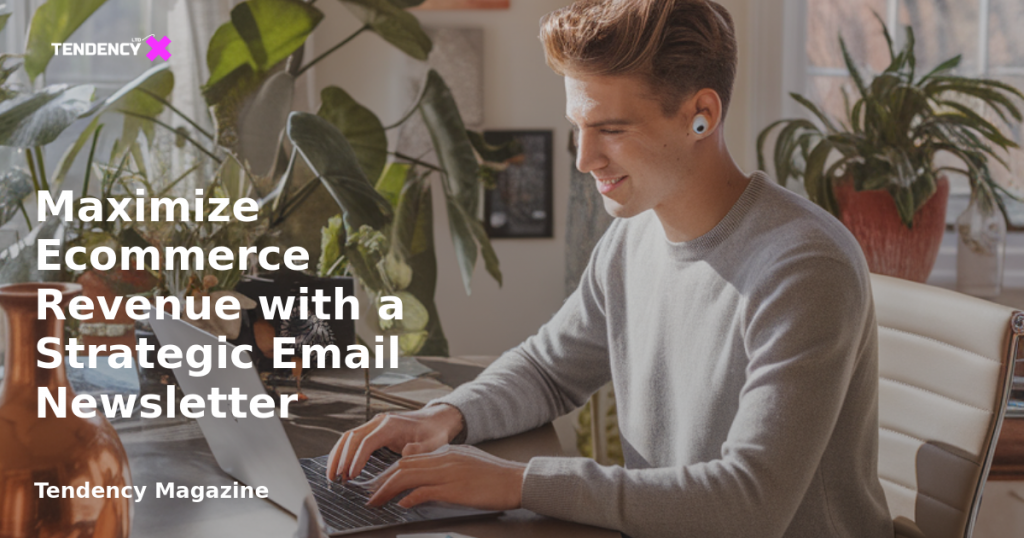Maximize Ecommerce Revenue with a Strategic Email Newsletter

Table of Contents:
- Introduction to Email Newsletters
- The Unique Advantage of Email Newsletters
- Key Reasons to Send an Ecommerce Newsletter
- Crafting Your Newsletter Content
- Best Practices for Creating Newsletters
- Choosing the Right Email Marketing Platform
- Conclusion
The Unique Advantage of Email Newsletters
Email newsletters stand out from other marketing strategies because they are sent to individuals who have explicitly opted in to receive them. This audience is inherently more receptive and engaged, as they have shown interest in your brand by subscribing. Unlike social media ads or search engine marketing, newsletters reach people who already have a connection with your business, making them a warmer audience ready to engage with your content.
Key Reasons to Send an Ecommerce Newsletter
Staying Top of Mind
In today’s fast-paced digital landscape, staying top of mind with your audience is crucial. With numerous brands vying for attention, a consistent newsletter helps maintain a connection with your subscribers. Even if they don’t open every email, seeing your brand name and subject lines regularly keeps you in their consciousness, increasing the likelihood they’ll think of you when ready to make a purchase.
Relevance and Helpfulness
To maximize the effectiveness of your newsletter, focus on delivering content that is relevant and helpful to your audience. This includes providing information that addresses their needs, interests, and challenges. By offering valuable insights and solutions, you position your brand as a trusted resource, encouraging subscribers to engage with your content and ultimately make purchases.
Offering Solutions and Entertainment
Beyond promoting products, newsletters can offer solutions to common problems faced by your audience. Whether it’s tips for using your products more effectively or lifestyle advice related to your niche, providing solutions builds trust and loyalty. Additionally, incorporating entertainment elements like humor or engaging stories can make your newsletters more memorable and enjoyable, fostering a deeper connection with your audience.
Building Relatability and Engagement
Crafting content that feels relatable is key to building a strong relationship with your subscribers. Use a conversational tone and share stories or insights that resonate with your audience’s experiences. Encourage engagement by inviting feedback, conducting polls, or sharing user-generated content. This not only makes your audience feel valued but also provides you with valuable insights into their preferences.
Crafting Your Newsletter Content
New Product Announcements
When launching new products, your newsletter is an ideal platform to generate excitement and anticipation. Share behind-the-scenes stories, highlight unique features, and offer exclusive deals to your subscribers. By creating a sense of exclusivity, you encourage early engagement and sales.
Upcoming Events and Relevant News
Keep your audience informed about upcoming events, whether they’re online webinars, product launches, or industry happenings. Providing relevant news or insights related to your niche positions your brand as an authority and keeps your content fresh and engaging.
Customer Feedback and Humor
Incorporating customer reviews and feedback into your newsletters not only showcases your products’ value but also builds trust with potential buyers. Additionally, don’t shy away from adding a touch of humor or personality to your content. A well-placed joke or entertaining story can make your newsletter stand out and foster a positive association with your brand.
Promotions and Seasonal Content
Leverage your newsletter to promote special offers, seasonal deals, and exclusive discounts for subscribers. This not only drives sales but also rewards your loyal audience, encouraging them to stay subscribed and engaged. Tailor your promotions to align with holidays or seasonal trends to maximize their impact.
Best Practices for Creating Newsletters
Email Frequency and Scheduling
Determine a consistent schedule for sending your newsletters, whether it’s weekly, bi-weekly, or monthly. Consistency helps build anticipation and ensures your audience knows when to expect your content. Plan your content calendar in advance to streamline the creation process and ensure timely delivery.
Writing and Content Creation
Decide who will be responsible for writing and designing your newsletters. Whether it’s an in-house team or freelance writers, ensure everyone involved understands your brand voice and goals. Batch writing and scheduling content can help maintain consistency and reduce last-minute stress.
Recurring Features and Idea Generation
Incorporate recurring features in your newsletters to build familiarity and anticipation among your audience. This could be a “tip of the month,” a customer spotlight, or a humorous section. Keep an idea file where you collect content ideas, news articles, and user-generated content to draw from when creating newsletters.
Choosing the Right Email Marketing Platform
Selecting the right email marketing platform is crucial for executing your newsletter strategy effectively. Look for platforms that offer robust automation, segmentation, and analytics features. Popular options like Klaviyo, MailPoet, and Mailchimp integrate seamlessly with Shopify platforms, providing the tools you need to craft and send impactful newsletters.
Conclusion
Email newsletters are a powerful tool for ecommerce businesses looking to maximize revenue and build lasting relationships with their audience. By delivering relevant, engaging, and valuable content, you can keep your brand top of mind, foster customer loyalty, and drive sales. With the right strategy and tools, your newsletter can become a cornerstone of your marketing efforts, helping you achieve your business goals and stand out in the competitive ecommerce landscape.
2025 Tendency LTD. All rights reserved.

